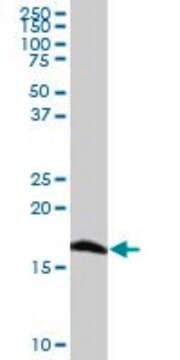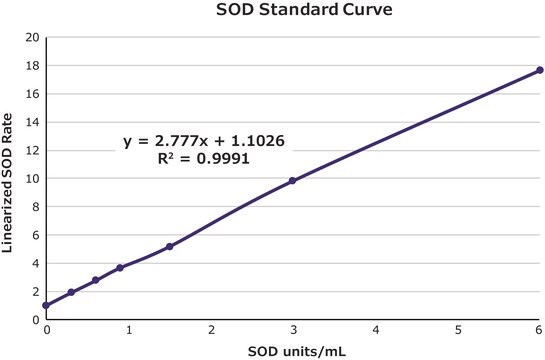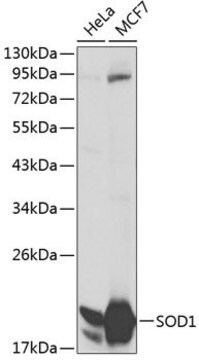Kluczowe dokumenty
SAB4200807
Przeciwciało przeciwkodysmutazie ponadtlenkowej(SOD), mysie monoklonalne
clone SD-G6, purified from hybridoma cell culture
Synonim(y):
Cu-Zn, Dysmutaza ponadtlenkowa 1, hSod1
About This Item
Polecane produkty
pochodzenie biologiczne
mouse
forma przeciwciała
purified from hybridoma cell culture
rodzaj przeciwciała
primary antibodies
klon
SD-G6, monoclonal
Formularz
buffered aqueous solution
reaktywność gatunkowa
human, rat, canine
opakowanie
antibody small pack of 25 μL
metody
indirect ELISA: 0.3-0.6 μg/mL using 5μg/ml Superoxide Dismutase from human erythrocytes for coating
izotyp
IgG1
numer dostępu UniProt
Warunki transportu
dry ice
temp. przechowywania
−20°C
docelowa modyfikacja potranslacyjna
unmodified
informacje o genach
human ... SOD1(6647)
Powiązane kategorie
Opis ogólny
Immunogen
Zastosowanie
Postać fizyczna
Inne uwagi
Nie możesz znaleźć właściwego produktu?
Wypróbuj nasz Narzędzie selektora produktów.
Kod klasy składowania
12 - Non Combustible Liquids
Klasa zagrożenia wodnego (WGK)
nwg
Temperatura zapłonu (°F)
Not applicable
Temperatura zapłonu (°C)
Not applicable
Wybierz jedną z najnowszych wersji:
Certyfikaty analizy (CoA)
Nie widzisz odpowiedniej wersji?
Jeśli potrzebujesz konkretnej wersji, możesz wyszukać konkretny certyfikat według numeru partii lub serii.
Masz już ten produkt?
Dokumenty związane z niedawno zakupionymi produktami zostały zamieszczone w Bibliotece dokumentów.
Global Trade Item Number
| SKU | GTIN |
|---|---|
| SAB4200807-100UL | 4061838045652 |
| SAB4200807-25UL | 4061838045669 |
Nasz zespół naukowców ma doświadczenie we wszystkich obszarach badań, w tym w naukach przyrodniczych, materiałoznawstwie, syntezie chemicznej, chromatografii, analityce i wielu innych dziedzinach.
Skontaktuj się z zespołem ds. pomocy technicznej







